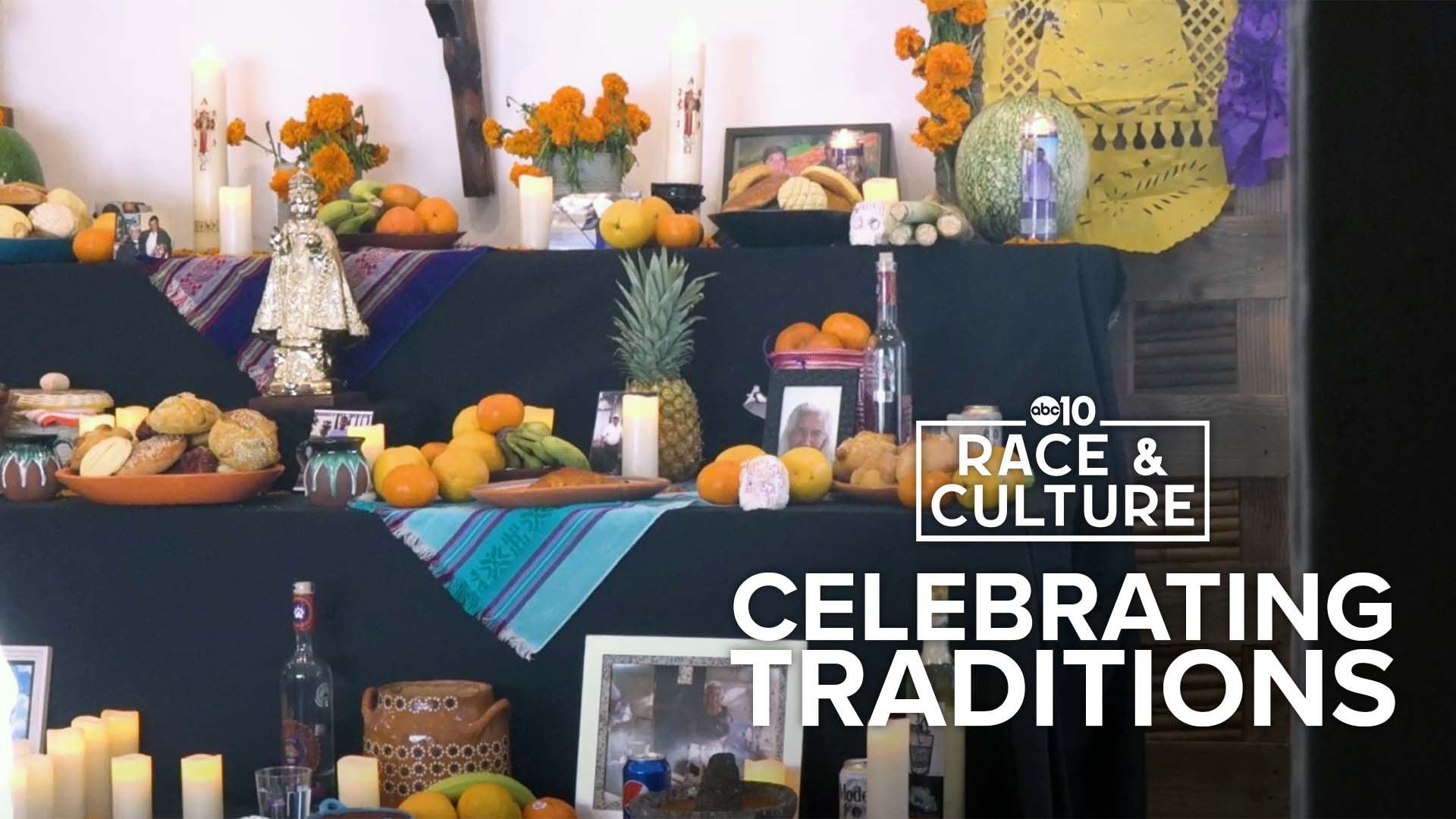SACRAMENTO, Calif. — For Jorge Ruiz, Día de los Muertos, or Day of the Dead, was always a tradition he looked forward to with his entire family.
"To me, it means spending a day with your loved ones. I think it's remembering our loved ones who have passed and keeping them with us, not forgetting them," said Ruiz.
He was born and raised in Mexico City, but his family often went to Oaxaca during summer and winter breaks. It's also where he had his first encounter with ofrendas, or altars, which are at the center of Dia de los Muertos traditions. They often include photos, food and favorite items of loved ones who have passed away.
The traditionally Mexican holiday is often celebrated Nov. 1 and 2, although that isn't the case for every region in México. However, for Ruiz, celebrations always seemed to start several weeks before. That's because he could always feel the excitement among his family.
"You can feel it because the elders, they'll always be like, something falls in the kitchen like dishes or you hear a sound or a voice of someone but no one is there," said Ruiz.
He learned those were signs the beloved were coming back home. Ruiz later moved to Sacramento where he sought opportunities to continue those traditions.
"Everything was new... there was something that I felt I needed. Probably like, a community I would say," said Ruiz. "And then one of my friends invited me to one event, which was Día de los Muertos, and it was something that fulfilled me in a way."
He would later be involved in more Día de los Muertos events hosted by the Latino Center of Art and Culture (LCAC), which offers Latinx programming, art education workshops and a community gathering space. He then became a board member.
LCAC hosted an 'Altares de Mexico' workshop event Oct. 28 for attendees to learn about how traditions and altars vary in different regions of México. The workshop was conducted in Spanish by five maestros, or teachers, including Ruiz.
Maestros Ramon Olvera and Jorge Guerrero shared about traditions in Ixtlán del Río in the state of Nayarit, Marco Sánchez shared about traditions in Guadalajara, Vidal Ivan Beltran Aguilera shared about traditions in Pátzcuaro in the state of Michoacán and Ruiz shared about traditions in Chalcatongo in the state of Oaxaca.
Depending on the region, everything from the number of days celebrated to the number of tiers down to certain elements on the altar can differ.
Ruiz shared in La Mixteca, a region in the state of Oaxaca, arches are a vital part of altars — and they're not just used for the Day of the Dead.
"It's also used in weddings and other religious celebrations. When we have the arch, whoever is under the arch, is the most important people in the celebration. They're people of honor," he said.
In Oaxaca, celebrations also technically start Oct. 31 instead of Nov. 1.
"It's different from Michoacán because they celebrate the little ones and the adults on the same day and divide them between the morning and evening. We have two days — the 31st is for the little ones and then the adults on the 1st. And then the 2nd, it's when we go to the cemetery," said Ruiz.
Maestro Sánchez was invited to the workshop to share about his experiences traveling across México for more than 20 years to learn about different cultures and aspects of Día de los Muertos celebrations. He shared growing up in Guadalajara, he never grew up with Día de los Muertos traditions simply because they didn't exist in his city.
"The reason why is because the region or my city was funded by Spanish people and they brought all their Spanish traditions with them," said Sánchez.
He says when he moved to Sacramento in 1994, others often assumed Día de los Muertos was part of his traditions.
"That was the spark for me to start learning not just about Día de los Muertos, but the cultures, dances, history and everything in México. So I started traveling to look for that answer," he said.
Ruiz said this workshop was particularly important to showcase the beauty in the diversity of traditions and celebrations throughout México.
"It's not just one way to do or to make an ofrenda or an altar. There's different ways, and that's fine. Maybe some people say, 'Oh, that's not how you do it.' But it's because it depends on where you are or where you come from. It has different meanings," he said.
Through educational workshops, he hopes to continue to bring more awareness to different cultural celebrations, as well as dispel myths.
"I think a lot of people feel like (Día de los Muertos) is the Mexican Halloween because they don't know the real meaning," said Ruiz. "That's why we also create these workshops so they know the real meaning. Hopefully they take part in it, they see it differently."
We want to hear from you!
The Race and Culture team's mission is to serve our diverse communities through authentic representation, community engagement and equitable reporting.
Accomplishing our goals of inclusive reporting requires hearing from you. Is there a person or place that you want us to highlight? Email us at raceandculture@abc10.com or fill out the form below.

